
History of the Vietnam Veterans Memorial
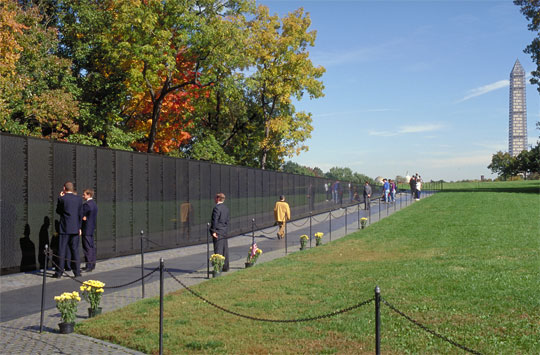
The Vietnam Veterans Memorial in 1999. © Peter R. Penczer 1999.
The Vietnam War ended in 1975. Compared with other monuments on the Mall, the memorial to those who served in Vietnam was realized with extraordinary speed, although its design was almost as controversial as the war itself.
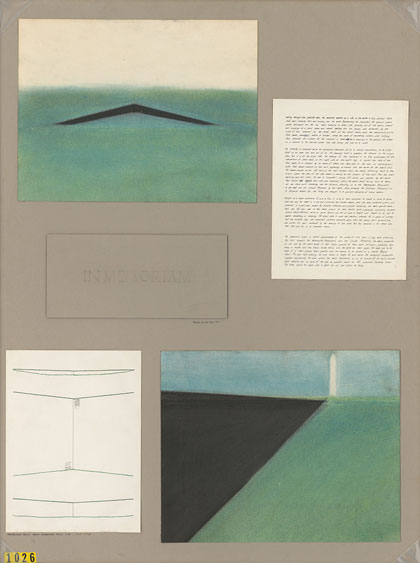
Maya Lin's winning entry in the 1981 competition for the Vietnam Veterans Memorial included three sketches and a written description of her proposal. Lin's modernist design, very different from any of the other entries, immediately seized the imagination of the judges. Credit: Library of Congress.
The Vietnam Veterans Memorial Fund (VVMF), a private organization, was formed in 1979 to fund the memorial and see it to completion. In 1981, after a competition that drew a record 1,421 entries, the jury selected a design by Maya Lin, then a 21-year-old architecture student at Yale University. Lin's design featured a V-shaped black granite wall set into the earth. One arm of the wall would be aligned with the Washington Monument, and the other, with the Lincoln Memorial. The names of those who died or remained missing would be inscribed on the wall.
The VVMF required that the memorial be politically neutral toward the war. Some critics felt that Lin's proposal was antiwar, an expression of shame and sorrow that dishonored those who had died, not one of pride and patriotism. These objections were overcome by adding a flagpole and a sculpture to the memorial. The placement of these new elements was itself controversial, and ultimately, they were located at the west entrance, where they have minimal impact on the integrity of Lin's design.

The names on the wall are in order by date of death, or mortal injury, starting at the top of first panel to the right of the vertex where the two halves of the wall join. © Peter R. Penczer 1999.
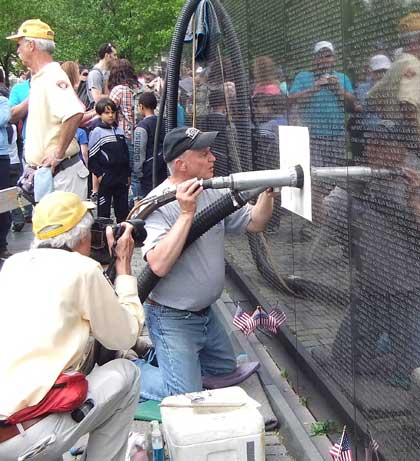
A name is added to the wall in 2014. If a serviceman dies of his wounds, even decades after the end of the war, his name is added to the wall. © Peter R. Penczer 2014.
Ground was broken in March 1982, and the memorial was dedicated on November 13 that year. Each arm of the wall is 247 feet long and comprises 74 black granite slabs. Names are occasionally added to the wall, and as of Memorial Day 2015, there were 58,307 names.
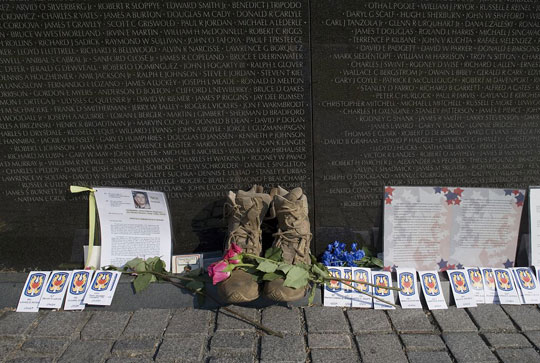
Visitors often leave momentoes at the wall, seen here on Memorial Day 2006. Credit: Library of Congress, Carol M. Highsmith Archive.
Lin intended that the memorial be experienced by descending into it, not as a static object to be viewed from afar. Indeed, a chain railing forces visitors into intimate contact with the wall, where their reflections in the black granite merge with the names of the dead. A visit to the wall is a moving experience. Perhaps the memorial's success lies in the fact that it makes no judgment about the war, leaving it open to individual interpretation.

The Three Servicemen statue, by Frederick Hart, was added to the memorial after its completion. It addressed critics' concerns that the memorial should be demonstrably patriotic. © F. E. Hart and VVMF 1984; photograph © Peter R. Penczer.
The commission for the sculpture went to Frederick Hart. Dedicated in 1984, Hart's work is a realistic depiction of three soldiers, two white and one black. Criticism that Hart's statue did not include a figural portrayal of a woman, many of whom served in Vietnam, led to the establishment of the Vietnam Women's Memorial, a narrative sculptural group by Glenna Goodacre. Located in the woods to the southeast of the wall, it was dedicated in 1993.
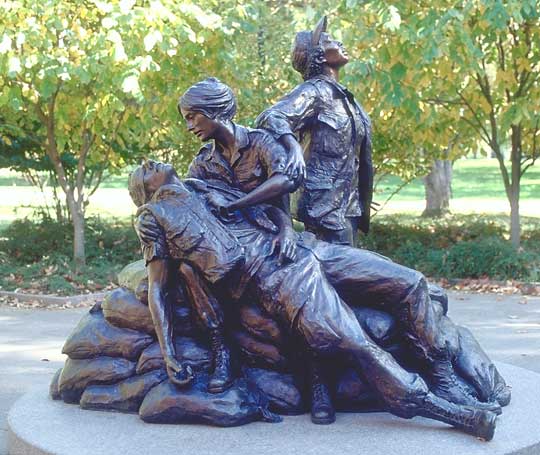
The Vietnam Women's Memorial, by Glenna Goodacre, acknowledges the contributions of women who served in the war. The names of eight women, all nurses, are on the wall. © 1993 VVMF, Inc., Glenna Goodacre, sculptor; photograph © Peter R. Penczer.
Adapted with permission from The Washington National Mall, by Peter R. Penczer, Oneonta Press, Arlington, Va.: 2007.
Copyright © Peter R. Penczer 2016